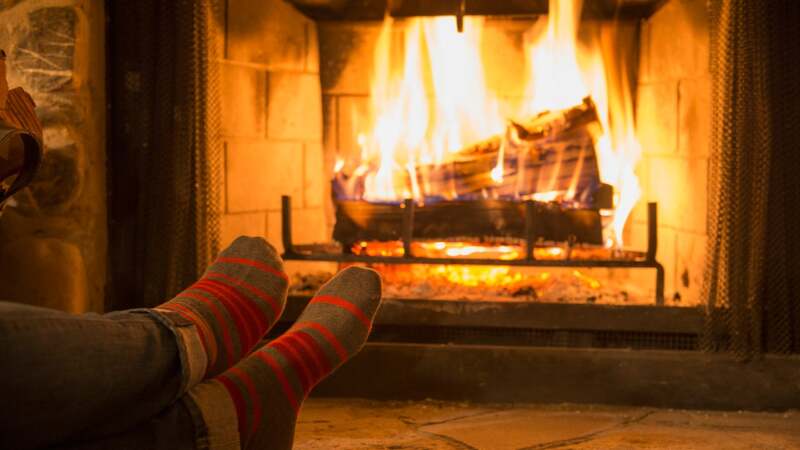Most people automatically turn to electric heating systems when temperatures drop to keep their homes comfortable. While these cost-effective solutions take the guesswork out of controlling the temperature, other options exist than heating a room with electricity. A few simple tools and supplies can create a low-tech solution that will provide warm air even during a power failure or limited access. In this blog post, we’ll examine how old-fashioned methods can help you heat any space successfully without relying on electricity.
Identify the Source of Heat-Producing Materials
When designing your space, it is crucial to identify the potential sources of heat-producing materials that can be harnessed to maintain a comfortable temperature and contribute to energy efficiency. These sources may include natural sunlight, optimized through strategic window placement and appropriate building orientation, or utilizing readily available, renewable energy sources such as biomass, geothermal, or solar thermal installations.
Additionally, consider the heat generated by appliances, lighting, and electronic devices, as well as any residual heat produced by human activity within the space, which can all be accounted for in your design plans. By identifying these heat-producing sources, you can harness their potential to foster a sustainable, energy-efficient environment that reflects a professional dedication to environmental responsibility and comfort in your space.
Research How To Safely and Effectively use a Fireplace Without Electricity
Preparing for unexpected scenarios, such as power outages during cold weather, is essential in today’s continuously evolving world. Ensuring your home remains warm and comfortable can be achieved safely and effectively by utilizing a fireplace, wood stove, or space heater, even without electricity. To guarantee safety, one must conduct thorough research and familiarize themselves with specific guidelines, such as maintaining appropriate clearances from combustible materials, proper ventilation to avoid carbon monoxide poisoning, and installing smoke and carbon monoxide detectors.
Furthermore, understanding the correct fuel and maintenance procedures for each heating device ensures their practical use, providing security and warmth during unexpected adversity. By gaining knowledge and taking safety precautions, homeowners can be confident in weathering any storm without fearing the loss of electricity.
Invest in a Quality Firewood Supply
Investing in a quality firewood supply is essential to optimizing your heating system’s performance and maintaining a healthy living environment. Many individuals make the grave mistake of utilizing damp, green wood in their fireplaces or wood-burning stoves, resulting in excessive smoke production and minimal heat generation. This can lead to various issues, such as reduced efficiency, escalated fuel costs, and the aggravation of respiratory conditions.
Moreover, the increased smoke may cause a buildup of hazardous creosote in your chimney, elevating the risk of chimney fires. To avoid such complications and enjoy a comfortable, safe atmosphere in your home, consciously invest in correctly seasoned, quality firewood. This wise decision will enhance your heating experience and create a more sustainable and cleaner environment.
Build a Wall Around the Heat Source
Implementing a wall around the heat source in any setting is vital for maximum safety and efficiency. As a professional in this field, I can attest that such a barrier not only functions as a protective shield – minimizing potential hazards, accidents, or damage to surrounding properties – but also significantly contributes to the overall efficacy of the heat-generating system.
Additionally, the wall aids heat distribution, ensuring a steady and controlled environment. An additional advantage to constructing a wall around the heat source is that it may lead to financial savings in the long run. By investing in this safety measure, you are, in turn, reducing the risk of costly repairs or replacements associated with unforeseen damage. Therefore, it is highly recommended that you strongly consider building a wall around your heat source for maximum safety and efficiency.
Insulate the Area by Using Blankets or Wugs on Windows and Doors
Insulating the area is one of the most critical steps to heating a room without electricity. This can be accomplished by using blankets or rugs over windows and doors. This helps keep warm air and cold air from entering your room. Additionally, weatherproofing any cracks in your walls or windows will help maintain an even higher level of insulation throughout your environment. Furthermore, floor coverings made from thicker materials such as wool and fur create an extra layer of warmth. These insulation techniques will help ensure your room stays comfortably warm without relying on electricity.
Use Reflective Surfaces to Increase the Room’s Temperature
Incorporating reflective surfaces, such as aluminium foil, into a room’s design is a creative and innovative strategy to enhance the overall temperature. This technique benefits those seeking a cost-effective and environmentally friendly solution during colder seasons. By placing aluminium foil strategically to encompass heat sources, including radiators or heaters, the radiated warmth is reflected into the room instead of being absorbed by the walls. As a result, there is a significant improvement in heat retention and room comfort. Implementing such professional measures optimizes energy efficiency and promotes a sustainable living solution for those in pursuit of maintaining a cozy atmosphere in their living spaces.
Conclusion
Heating a room without electricity can be a tricky yet rewarding feat. You can heat your space safely and efficiently without any electricity through the research process and implementation of the best practices outlined in this post.

